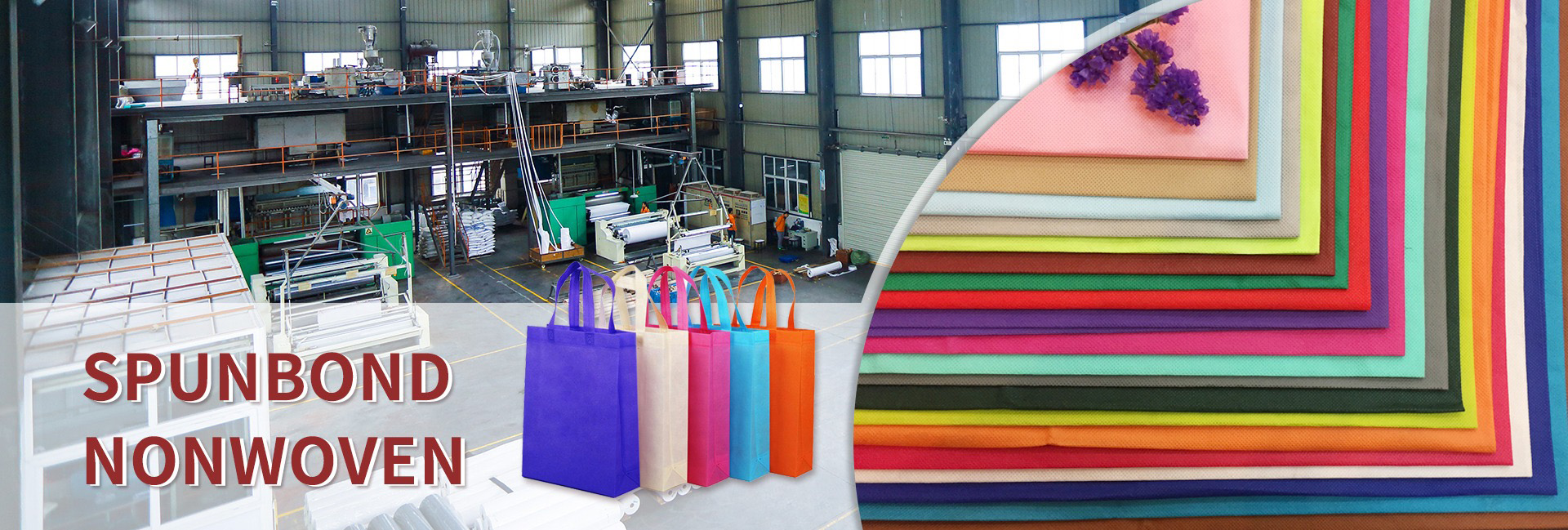Spunbond nonwoven packaging, with its unique material properties, is disrupting the traditional paper and plastic-dominated packaging market. No longer limited to the textile and medical sectors, it is emerging as a new material with balanced performance in the packaging industry.
Let’s take a deeper look at this trend and explore the capabilities of this “cross-border challenger.”
Challenger’s Advantages: What makes spunbond nonwovens tick?
The rise of spunbond nonwoven packaging materials stems from its successful balance between the advantages and disadvantages of traditional paper and plastic:
Compared to traditional plastics: More environmentally friendly and aesthetically pleasing
Plastic reduction and environmental image: Recyclable and easily biodegradable (such as using PP, PET, or bio-based PLA), it perfectly aligns with the global trend of plastic restrictions and bans, allowing brands to instantly enhance their environmental image.
Premium touch and appearance: The uniquely soft feel and premium matte finish of textiles significantly elevate products. It is easy to print and perform various post-processing operations (such as embossing and printing), allowing for greater design flexibility.
Compared to traditional paper: Tougher and more durable
Excellent strength: Especially wet strength, it maintains its shape and function even in humid environments and resists tearing, a feature unmatched by ordinary paper.
Flexible and wrinkle-resistant: With excellent tear and wrinkle resistance, it resists deformation and can withstand long-distance transportation and repeated handling.
Where is the battleground? Key application scenarios
Thanks to these advantages, spunbond nonwovens are rapidly penetrating the following packaging segments:
Luxury and boutique shopping bags
This is the most typical application. High-end apparel, cosmetics, jewelry, and liquor brands are gradually replacing coated paper or plastic shopping bags with spunbond nonwoven shopping bags. They combine the crispness of paper with the texture of fabric, have a high reusability rate, and serve as a form of mobile advertising.
Eco-friendly linings for electronics and appliances
Previously, plastic pearl cotton or foam were used for cushioning linings. Now, many brands are turning to recyclable spunbond nonwovens for inner packaging or dust covers, which are more environmentally friendly and static-free.
A rising star in food packaging
For example, tea bags, coffee packaging liners, and individual small gift packages like mooncakes offer new options leveraging their excellent stability and potential food-grade safety.
Sustainable Express Packaging
Reusable spunbond nonwoven courier bags are already in use. They are lighter and more attractive than woven bags, and more pressure-resistant and waterproof than cardboard, meeting the lightweight and green demands of e-commerce logistics.
The Driving Force Behind This: Why Now?
The rise of this trend is not accidental, but the result of a combination of factors:
Policy Support: Global plastic bans and the “dual carbon” goals have created a significant market gap for environmentally friendly packaging materials.
Consumption Upgrade: Consumers are no longer satisfied with basic functionality and are increasingly seeking product quality, design, and brand value. Spunbond nonwoven packaging perfectly meets these emotional demands.
Technological Maturity: The increasing maturity of spunbond nonwoven technology and continued cost optimization have enabled it to compete with mid- to high-end paper and plastic packaging in terms of cost-effectiveness.
Brand Needs: Brands urgently need to attract consumers through packaging differentiation while also fulfilling their corporate social responsibility (ESG). Spunbond nonwoven packaging offers an ideal solution.
Summary and Outlook
Spunbond nonwovens’ “crossover challenge” to the traditional paper and plastic market is essentially a packaging material innovation driven by both consumer upgrades and environmental awareness.
It is not intended to completely replace paper or plastic, but rather, with its unique combination of properties, it has created a new category in a massive market and is steadily eroding the market share of traditional materials. In the future, with the increasing adoption of biodegradable technology, spunbond nonwovens are expected to further solidify their position in the packaging industry, becoming an indispensable component of green packaging solutions.
Dongguan Liansheng Non woven Technology Co., Ltd. was established in May 2020. It is a large-scale non-woven fabric production enterprise integrating research and development, production, and sales. It can produce various colors of PP spunbond non-woven fabrics with a width of less than 3.2 meters from 9 grams to 300 grams.
Post time: Oct-21-2025

